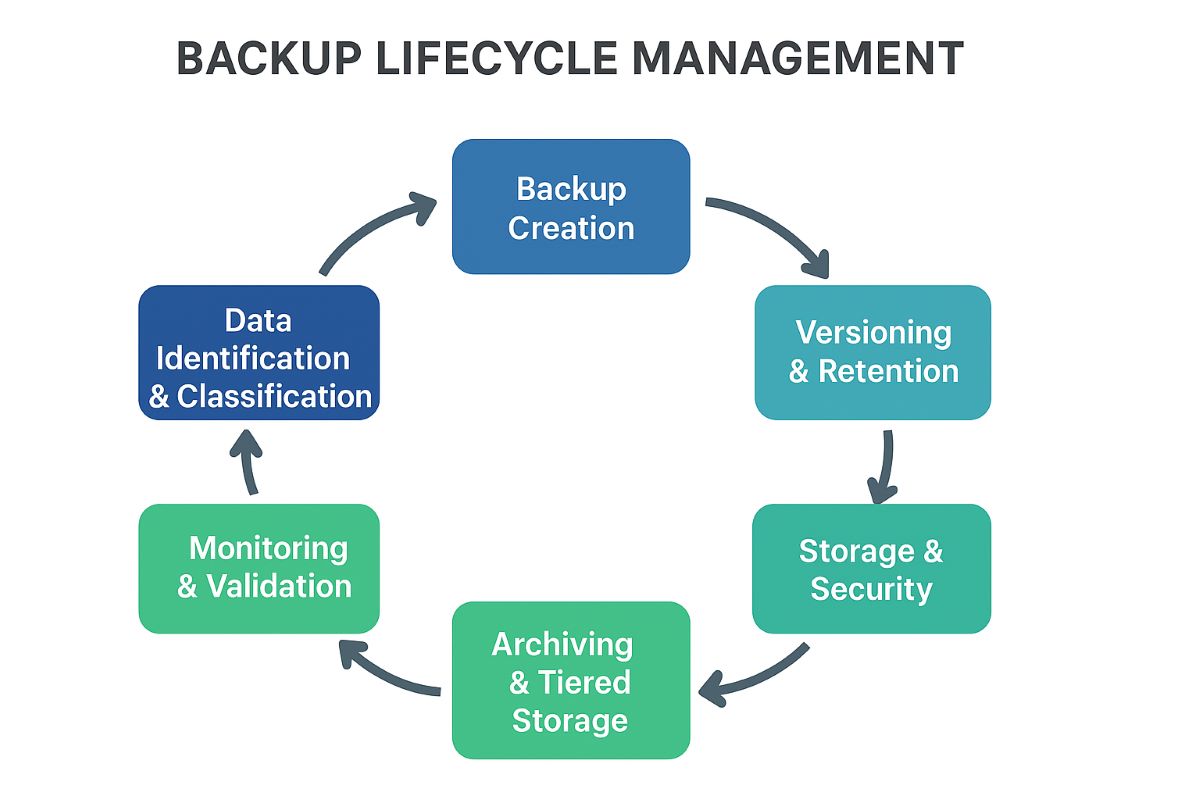
In today’s cloud-first world, businesses increasingly rely on SaaS applications and hybrid cloud systems to store critical data. But having a backup is only part of the solution, without a structured approach, backups can become unreliable, unmanageable, or non-compliant. This is where Backup Lifecycle Management (BLM) comes in.
Backup Lifecycle Management is the process of planning, creating, managing, and retiring backups in a structured, automated manner. It ensures that data is secure, accessible, and compliant throughout its entire lifecycle, from creation to deletion.
Proper BLM is crucial for SaaS applications, hybrid cloud environments, and enterprise systems where the sheer volume of data can become overwhelming without a clear strategy.
Before backing up, determine which data is critical, sensitive, or long-term. Classifying data based on business value and compliance requirements ensures resources focus on what truly matters.
Example: Financial records, customer databases, and source code repositories require more frequent backups and longer retention periods.
Decide on the type of backups, full, incremental, differential, or snapshots, and set up automated schedules to ensure consistency.
Example: Daily incremental backups combined with weekly full backups for a SaaS database.
Maintain multiple versions of files or datasets and set retention policies that align with regulatory and business needs.
Example: Keep the last 30 versions of a document for operational recovery while archiving older versions for 3–5 years for compliance purposes.
Determine where backups are stored, on-premises, cloud, or a hybrid solution. Implement encryption and strict access controls to protect sensitive data.
Example: Store critical backups in geographically separated cloud regions for disaster recovery readiness.
Regularly monitor backup jobs to catch failures or incomplete backups. Conduct periodic restore tests to ensure data integrity and recoverability.
Example: Monthly restore tests of key SaaS app data confirm backups are actually usable when needed.
Move inactive or rarely accessed backups to cost-effective, long-term storage. Ensure archived backups remain accessible for audits or compliance purposes.
Example: Salesforce customer records older than five years are archived to cold storage while still being retrievable if necessary.
Securely retire obsolete backups according to retention policies, ensuring that deleted data cannot be recovered by unauthorized parties.
Example: GDPR-compliant deletion of personal data after the retention period expires.
Backup Lifecycle Management transforms backups from a simple insurance policy into a strategic business asset. By implementing a structured approach, covering data classification, versioning, retention, archiving, and secure deletion, organizations can ensure their SaaS and cloud data is reliable, secure, cost-effective, and compliant.
Ready to simplify your backup lifecycle? Book a consultation with our data protection experts.